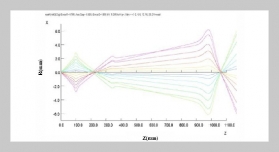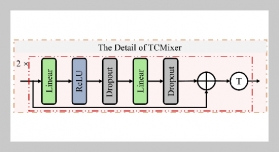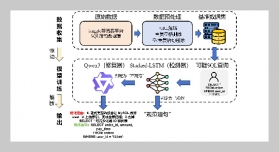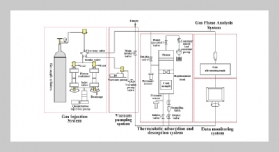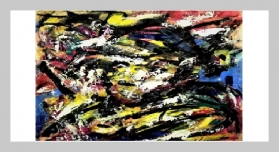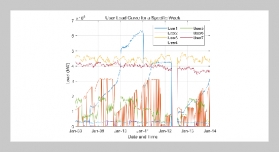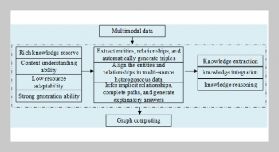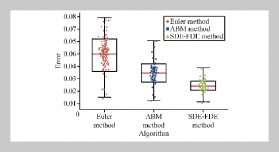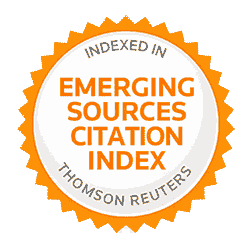- [1] K.-H. N. Bui, J. Cho, and H. Yi, (2022) “Spatial�temporal graph neural network for traffic forecasting: An overview and open research issues" Applied Intel�ligence 52(3): 2763–2774. DOI: 10.1007/s10489-021-02587-w.
- [2] M. Saleem, S. Abbas, T. M. Ghazal, M. A. Khan, N. Sa�hawneh, and M. Ahmad, (2022) “Smart cities: Fusion�based intelligent traffic congestion control system for ve�hicular networks using machine learning techniques" Egyptian Informatics Journal 23(3): 417–426. DOI: 10.1016/j.eij.2022.03.003.
- [3] A. Ali, Y. Zhu, and M. Zakarya, (2022) “Exploiting dynamic spatio-temporal graph convolutional neural net�works for citywide traffic flows prediction" Neural Net�works 145: 233–247. DOI: 10.1016/j.neunet.2021.10.021.
- [4] J. James, (2022) “Graph construction for traffic predic�tion: a data-driven approach" IEEE Transactions on In�telligent Transportation Systems 23(9): 15015–15027. DOI: 10.1109/TITS.2021.3136161.
- [5] W. Jiang, J. Luo, M. He, and W. Gu, (2023) “Graph neu�ral network for traffic forecasting: The research progress" ISPRS International Journal of Geo-Information 12(3): 100. DOI: 10.3390/ijgi12030100.
- [6] Q. Zhang, J. Chang, G. Meng, S. Xiang, and C. Pan. “Spatio-temporal graph structure learning for traffic forecasting”. In: Proceedings of the AAAI conference on artificial intelligence. 34. 01. 2020, 1177–1185. DOI: 10.1609/aaai.v34i01.5470.
- [7] B. Yu, H. Yin, and Z. Zhu. “Spatio-temporal graph convolutional networks: A deep learning framework for traffic forecasting”. In: Proceedings of the Twenty�Seventh International Joint Conference on Artificial In�telligence. 2018, 3634–3640. DOI: 10.24963/ijcai.2018/505.
- [8] L. Zhao, Y. Song, C. Zhang, Y. Liu, P. Wang, T. Lin, M. Deng, and H. Li, (2019) “T-gcn: A temporal graph convolutional network for traffic prediction" IEEE Trans�actions on Intelligent Transportation Systems 21(9): 3848–3858. DOI: 10.1109/TITS.2019.2935152.
- [9] Y. Li, R. Yu, C. Shahabi, and Y. Liu. “Diffusion convo�lutional recurrent neural network: Data-driven traffic forecasting”. In: International Conference on Learning Representations. 2018.
- [10] Z. Wu, S. Pan, G. Long, J. Jiang, and C. Zhang. “Graph wavenet for deep spatial-temporal graph modeling”. In: Proceedings of the 28th International Joint Conference on Artificial Intelligence. 2019, 1907–1913.
- [11] S. Wang and G. Mao, (2019) “Fundamental limits of missing traffic data estimation in urban networks" IEEE Transactions on Intelligent Transportation Systems 21(3): 1191–1203. DOI: 10.1109/TITS.2019.2903524.
- [12] J.-M. Yang, Z.-R. Peng, and L. Lin, (2021) “Real-time spatiotemporal prediction and imputation of traffic status based on LSTM and Graph Laplacian regularized matrix factorization" Transportation Research Part C: Emerg�ing Technologies 129: 103228. DOI: 10.1016/j.trc.2021.103228.
- [13] L. Li, B. Du, Y. Wang, L. Qin, and H. Tan, (2020) “Real�time spatiotemporal prediction and imputation of traffic status based on LSTM and Graph Laplacian regularized matrix factorization" Knowledge-Based Systems 194: 105592. DOI: 10.1016/j.knosys.2020.105592.
- [14] J. Du, H. Chen, and W. Zhang, (2019) “A deep learning method for data recovery in sensor networks using effective spatio-temporal correlation data" Sensor Review 39(2): 208–217. DOI: 10.1108/SR-02-2018-0039.
- [15] Q. Li, H. Tan, Y. Wu, L. Ye, and F. Ding, (2020) “Traf�fic flow prediction with missing data imputed by tensor completion methods" IEEE Access 8: 63188–63201. DOI: 10.1109/ACCESS.2020.2984588.
- [16] C. K. Assaad, E. Devijver, and E. Gaussier, (2022) “Traffic flow prediction with missing data imputed by ten�sor completion methods" Journal of Artificial Intelli�gence Research 73: 767–819. DOI: 10.1613/jair.1.13428.
- [17] J. Runge, A. Gerhardus, G. Varando, V. Eyring, and G. Camps-Valls, (2023) “Causal inference for time series" Nature Reviews Earth & Environment 4(7): 487–505. DOI: 10.1038/s43017-023-00471-4.
- [18] J. Y. Zhu, C. Zhang, H. Zhang, S. Zhi, V. O. Li, J. Han, and Y. Zheng, (2017) “pg-causality: Identifying spatiotemporal causal pathways for air pollutants with urban big data" IEEE Transactions on Big Data 4(4): 571–585. DOI: 10.1109/TBDATA.2017.2723899.
- [19] Z. He, C.-Y. Chow, and J.-D. Zhang, (2020) “STNN: A spatio-temporal neural network for traffic predictions" IEEE Transactions on Intelligent Transportation Systems 22(12): 7642–7651. DOI: 10.1109/TITS.2020.3006227.
- [20] H. K. Joy and M. R. Kounte, (2022) “Deep CNN based video compression with lung ultrasound sample" Journal of Applied Science and Engineering 26(3): 313–321. DOI: 10.6180/jase.202303_26(3).0002.
- [21] A. Belhadi, Y. Djenouri, D. Djenouri, and J. C.-W. Lin, (2020) “A recurrent neural network for urban long-term traffic flow forecasting" Applied Intelligence 50: 3252– 3265. DOI: 10.1007/s10489-020-01716-1.
- [22] Y. Tian, K. Zhang, J. Li, X. Lin, and B. Yang, (2018) “LSTM-based traffic flow prediction with missing data" Neurocomputing 318: 297–305. DOI: 10.1016/j.neucom.2018.08.067.
- [23] Y. Ren, D. Zhao, D. Luo, H. Ma, and P. Duan, (2020) “Global-local temporal convolutional network for traffic flow prediction" IEEE Transactions on Intelligent Transportation Systems 23(2): 1578–1584. DOI: 10.1109/TITS.2020.3025076.
- [24] J. Zhang, Y. Zheng, and D. Qi. “Deep spatio-temporal residual networks for citywide crowd flows predic�tion”. In: Proceedings of the AAAI conference on artificial intelligence. 31. 1. 2017, 1655–1661. DOI: 10.1609/aaai.v31i1.10735.
- [25] D. Yang, K. Chen, M. Yang, and X. Zhao, (2019) “Ur�ban rail transit passenger flow forecast based on LSTM with enhanced long-term features" IET Intelligent Transport Systems 13(10): 1475–1482. DOI: 10.1049/ iet-its.2018.5511.
- [26] K. Wang, C. Ma, Y. Qiao, X. Lu, W. Hao, and S. Dong, (2021) “A hybrid deep learning model with 1DCNN�LSTM-Attention networks for short-term traffic flow pre�diction" Physica A: Statistical Mechanics and its Ap�plications 583: 126293. DOI: 10.1016/j.physa.2021. 126293.
- [27] D. Seng, F. Lv, Z. Liang, X. Shi, and Q. Fang, (2021) “Forecasting traffic flows in irregular regions with multi�graph convolutional network and gated recurrent unit" Frontiers of Information Technology & Electronic Engineering 22(9): 1179–1193. DOI: 10.1631/FITEE.2000243.
- [28] Z. Cui, L. Lin, Z. Pu, and Y. Wang, (2020) “Graph Markov network for traffic forecasting with missing data" Transportation Research Part C: Emerging Tech�nologies 117: 102671. DOI: 10.1016/j.trc.2020.102671.
- [29] C. Tang, J. Sun, Y. Sun, M. Peng, and N. Gan, (2020) “A general traffic flow prediction approach based on spatial�temporal graph attention" IEEE Access 8: 153731– 153741. DOI: 10.1109/ACCESS.2020.3018452.
- [30] A. Shojaie and E. B. Fox, (2022) “Granger causality: A review and recent advances" Annual Review of Statis�tics and Its Application 9: 289–319. DOI: 10.1146/annurev-statistics-040120-010930.
- [31] A. Wismüller, A. M. Dsouza, M. A. Vosoughi, and A. Abidin, (2021) “Large-scale nonlinear Granger causality for inferring directed dependence from short multivariate time-series data" Scientific reports 11(1): 7817. DOI: 10.1038/s41598-021-87316-6.
- [32] A. Tank, I. Covert, N. Foti, A. Shojaie, and E. B. Fox, (2021) “Neural Granger Causality" IEEE Transactions on Pattern Analysis and Machine Intelligence 44(8): 4267–4279. DOI: 10.1109/TPAMI.2021.3065601.
- [33] W. Ren, B. Li, and M. Han, (2020) “A novel Granger causality method based on HSIC-Lasso for revealing nonlinear relationship between multivariate time series" Physica A: Statistical Mechanics and its Applica�tions 541: 123245. DOI: 10.1016/j.physa.2019.123245.
- [34] S. Löwe, D. Madras, R. Zemel, and M. Welling. “Amortized causal discovery: Learning to infer causal graphs from time-series data”. In: Conference on Causal Learning and Reasoning. 2022, 509–525.
- [35] Y. Cheng, R. Yang, T. Xiao, Z. Li, J. Suo, K. He, and Q. Dai. “CUTS: Neural Causal Discovery from Irreg�ular Time-Series Data”. In: International Conference on Learning Representations. 2022.
- [36] G. Hooker, L. Mentch, and S. Zhou, (2021) “Unre�stricted permutation forces extrapolation: variable impor�tance requires at least one more model, or there is no free variable importance" Statistics and Computing 31: 1– 16. DOI: 10.1007/s11222-021-10057-z.



